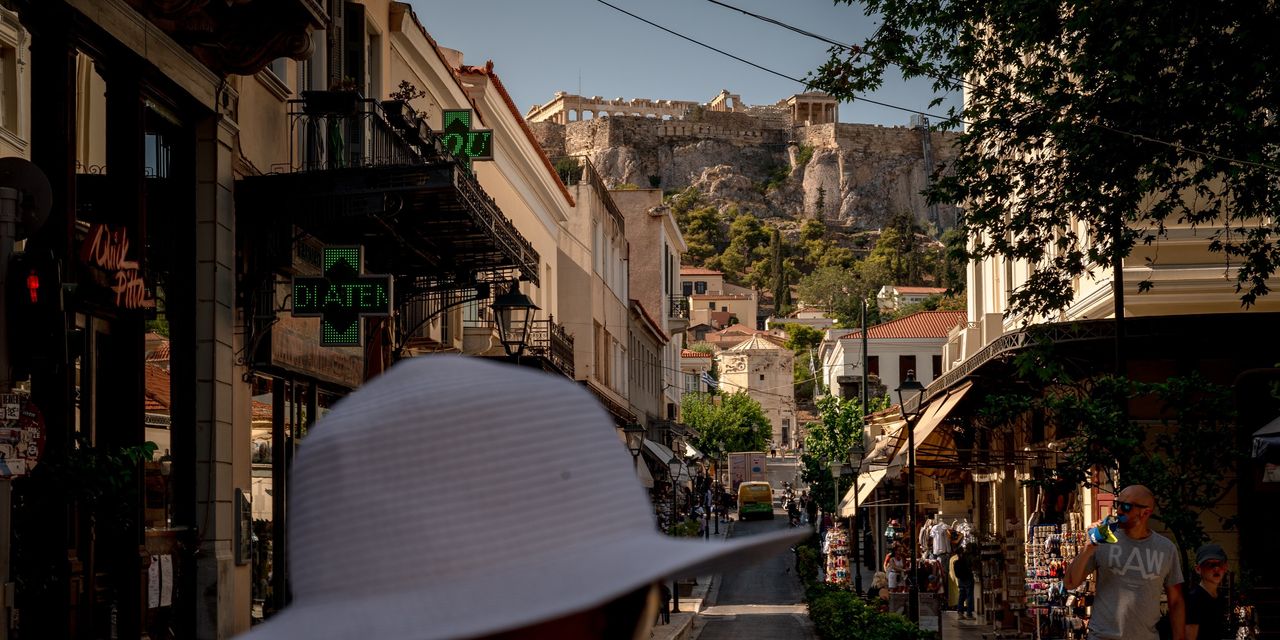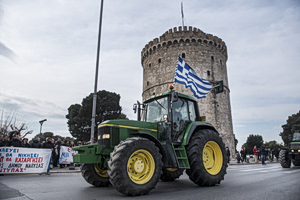Athens just might be the most underrated capital city in Europe.
When I first visited over two decades ago to research my books on ancient Greece, I found it a sprawling, gridlocked and gritty eyesore with graffiti-covered streets. Back then, most travelers allocated a day to visit the Acropolis, which is crowned by the beloved Parthenon, then fled to the glittering beaches and seafood tavernas of the Aegean islands.
But revisiting a couple of years ago, I was surprised to find that new subway lines, highways and pedestrian streets in the heart of the ancient city had transformed the experience of visiting Athens. Energetic Greek expats who returned during the pandemic had opened restaurants, galleries, cafes and boutiques, and were joined by European bohemians flooding south in search of cheap rents and sunshine.
All of this has turned the Greek capital, to my mind, into one of the most livable and entertaining cities in Europe. I’m a regular visitor again. And my personal (and admittedly opinionated) list of surprises includes the following:
1. Underground dining (literally)
It has no street number, no sign and no menu; it can only be found by descending worn stone steps below metal trap doors in the sidewalk on a corner near the central meat and fish markets of Varvakeios. But Diporto’s naturally cool cellar, lined with wine barrels and 10 or so shaky wooden tables, is a quintessential Athenian dining experience. It’s my first stop whenever I step off the overnight plane from New York. (It’s roughly open from early morning to 7 p.m.) The subterranean eatery dates from 1887, though some Athenians swear it was a wine bar in the days of Plato. The white-haired owner and chef, who goes by Mitsos, began working here as a waiter many decades ago, he tells me. He took over in 1991 when the previous owner died. Today, he labors over an array of battered tin pots burbling on gas burners, doling out grilled sardines with lemon, tasty chickpea stew, bean soup and Greek salads with plump olives, tomato and briny chunks of feta. A meal washed down with retsina can be enjoyed for around $15 a person.
2. Post-Acropolis therapy
After battling the crowds on the Sacred Rock, as the Acropolis was known in antiquity, even the most hardened sightseers need to refuel. The less-visited flank of the plateau, below the Acropolis Museum in the Koukaki area, has genuine culinary treats tucked away in leafy, narrow streets. The sandwich store Guarantee uses local ingredients like feta, hummus, olives, pickles, fresh vegetables and meats, all doused with a tangy vinaigrette. Or head to nearby Takis Bakery for delicious pies of spinach and leeks. There is also the coffee shop Lotte, where you can relax with a cappuccino freddo amid antique mirrors and opera arias—a soothing combination.
3. Rocking the amphitheater
Every visitor to the Acropolis admires the Odeon of Herodes Atticus carved into the citadel’s southern flank, a majestic amphitheater dating from the second century with sweeping views of the Aegean coast. But few realize that the ancient venue is still in use for summer theater and concerts. The program is wildly eclectic, and can be confusing: On my first visit, for example, I thought I had booked tickets for a play by Sophocles but it turned out I was attending a Led Zeppelin tribute show. My other efforts were more successful: I have enjoyed a Euripides classic tragedy, “The Bacchae,” and a concert celebrating the 100th birthday of the late Greek American opera diva Maria Callas.
4. Art in the red-light district
We think of Athens as crowded with classical marble statues, but the city also has blossomed as one of Europe’s most exciting contemporary-art centers. Among the many museums and galleries showing contemporary art, the most consistently intriguing Athenian-run gallery is the Breeder, which says on its website it is attempting to build “an artistic dialogue between Athens and the world.” The gallery, in the louche but safe neighborhood of Metaxourgeio, a red-light district with neoclassical mansions, is a five-minute stroll from leafy Avdi Square, a decidedly gentrified and pleasant refuge lined by outdoor cafes, hopping bars like Blue Parrot and fine restaurants like Seychelles.
5. The war of the rooftops
Bar-restaurants here compete for the most jaw-dropping rooftop views of the Acropolis, which is conveniently spot-lit after dark. The gilt-and-marble Hotel Grand Bretagne, a landmark since 1874 and base for visiting Hellenophiles, features the panoramic Roof Garden restaurant with high-end takes on Greek classics like cod with slow-cooked chickpeas. Or just drop by for a cocktail at sunset. The more-contemporary Dolli opened last year in a grandiose 1925 neoclassical mansion near the antique markets of Monastiraki. Its chic white lobby offers a provocative mix of ancient and modern art (including Picasso and Cocteau originals), but the most memorable aesthetic experience is the rooftop bar-restaurant, where an infinity pool reflects the glowing Parthenon.
6. Falafels and design
Visitors are often frustrated by the hokey souvenirs found in tourist shops here. But in the neighborhood of Plateia Anexartisias, you’ll find Anthologist, an eccentric boutique in a restored 1912 mansion where handcrafted jewelry, clothing, leather goods and tapestries mix classical Greek motifs with original contemporary designs. Its wares include brass fish key rings and hand-blown-glass candleholders created by traditional craftsmen. The shop is upstairs from the best falafel restaurant in the city—the no-frills Zanoubia.
7. Museum in a Metro station
Some 5,000 years of history lie buried here in layers like phyllo pastry. When the Athenian subway system was expanded it uncovered one of the world’s richest archaeological sites. The most vivid way to see the latest discoveries is to visit the new Metro stop Dimotiko Theatro, or Municipal Theater, in the port district of Piraeus, where the Athenian fleet was constructed in the era of Pericles. A free permanent exhibition called “Tales of Invisible Water” explains the elaborate hydraulic systems discovered here, including carved-stone aqueducts and rainwater cisterns.
Last year, a wildly original museum opened in a conservatory overlooking the ruins of Aristotle’s Lyceum to offer a high-tech, immersive exploration of the Greeks’ contribution to philosophy. The AiTherion, whose name is a play on artificial intelligence and ether, a primal element studied by the Greek philosophers, uses engaging touch-screen exhibits to involve visitors in debates about such concepts as eudaimonia , “the search for human well-being,” and how to improve democracy. One exhibit focuses on the philosopher Socrates, who was unjustly convicted in 399 B.C. of corrupting Athenian youth. The exhibit invites visitors to vote whether Socrates should accept the court’s verdict of death despite its obvious injustice, or whether he should flee Athens, as his friends begged him to do. Having to choose like that poses a kind of “philosophical escape room” for visitors, a curator quipped.
9. Benaki Museum of Islamic Art
The Benaki Museum of Islamic Art, which is almost always deserted, is considered one of the finest in Europe. Its presence here has a historical logic: Ancient Athens was the trade gateway to Egypt and the Middle East. (One historian called it “the first truly global city.”) For more than 350 years it was an outpost of the Ottoman Empire. Exquisite artifacts include carved knives, mirror cases and bejeweled household wares from the farthest reaches of the Arab world, which in the Middle Ages extended as far west as Spain. Afterward, head up to the rooftop cafe for delicacies like orange cake with tea.
10. The new Dionysia
The ancient Greeks didn’t invent wine. The laurels for that, as far as historians can tell, go to the country of Georgia. But the Greeks did spread wine’s cultivation to their colonies around the Mediterranean, including Sicily, southern Italy and Spain. Today, there remain some 1,200 vineyards in Greece, producing such local staples as white Moschofilero. The worldwide push for natural wines has well and truly taken hold with small producers here. Tanini Agapi Mou (“Tanin My Love”) offers a dizzying 100 natural Greek wines sold by the glass, volaki cheese and Thracian chorizo. For a treat, the industrial-chic Mona Athens hotel hosts regular residencies and pop-ups by Greek natural winemakers on the rooftop, with astonishing Acropolis views. It has to be admitted, the vista never gets old.
Tony Perrottet is a writer in New York. He can be reached at reports@wsj.com.



